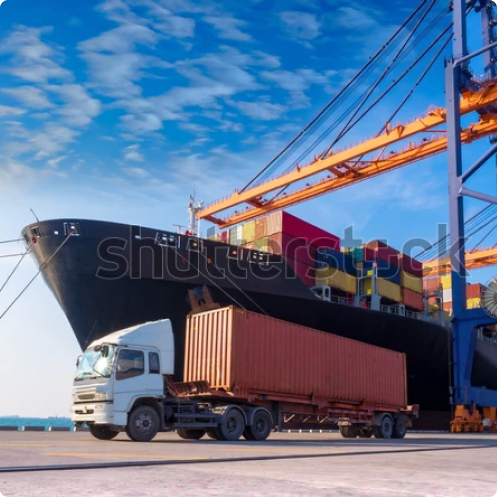The FIFO (First In, First Out) and FEFO (First Expired, First Out) methods are among the most widely used techniques for warehouse flow management. These organizational systems ensure proper stock rotation, minimizing the risk of product spoilage and improving operational efficiency. Crucial in industries such as food, chemicals, and pharmaceuticals, these approaches facilitate seamless inventory management while catering to the specific needs of various business sectors.
Are you considering implementing the FIFO or FEFO methods and want to learn more? In this article, brought to you by Savino Del Bene, we will explore what these methods are, how they work and the benefits they can bring to your business.
What are the FIFO and FEFO methods?
The FIFO (First In, First Out) method follows a straightforward principle: the first products to enter the warehouse are also the first to be picked and distributed. The FEFO (First Expired, First Out) method instead, prioritizes products with the nearest expiration dates, ensuring they are picked and distributed first, regardless of their arrival order.
These methods are crucial for perishable goods, such as food or pharmaceuticals, to comply with regulatory standards and maintain product quality. However, they are also widely used in other industries – such as textiles, chemicals, cosmetics- , to prevent goods from remaining in storage for extended periods, optimizing stock rotation and reducing waste.
How does the FIFO/FEFO methods work?
Implementing FIFO and FEFO requires strict organization of warehouse spaces and processes. Products are arranged either chronologically or based on expiration dates, ensuring that older stock is picked first. To facilitate this, newer items are stored behind older ones, streamlining inventory rotation and minimizing waste.

Optimizing warehouse storage areas
To effectively implement FIFO and FEFO systems in warehouse storage areas, dynamic flow shelving can be utilized. These structures enable a seamless stock rotation by allowing newer products to be loaded from one side while older ones are retrieved from the other.
Optimizing Operational Processes
In the inbound process, the arrival date of the goods is recorded in the Warehouse Management System (WMS) and remains linked to the item as one of its attributes. If a FEFO logic is required but the supplier cannot provide a barcode containing lot and expiration details, the warehouse can manually input this information into the WMS to ensure accurate tracking.
For products where lot and expiration tracking is not necessary, the FIFO method can still be applied using the arrival date, ensuring proper stock rotation based on the chronological order of receipt.
Technological support
The Warehouse Management System (WMS) is a key enabler of efficient, automated, and traceable warehouse operations. It ensures resource optimization, real-time monitoring, and full process control, supporting all inbound, outbound, and internal logistics activities.
Through advanced put-away algorithms, the WMS automatically determines the most efficient storage location for each item, considering factors such as dimensions, distances, lot numbers, and expiration dates. This ensures optimal space utilization and streamlined workflows, guiding operators step by step.
During outbound operations, the WMS dynamically allocates orders, prioritizing goods based on lot numbers, expiration dates, or receiving dates to ensure full compliance with FIFO/FEFO principles. Operators are directed to pick from authorized locations, minimizing errors and maximizing efficiency.
Beyond inventory management, the WMS supports intelligent order fulfillment planning, real-time inventory visibility, and seamless multi-channel data exchange. A critical feature for FIFO/FEFO operations is its ability to generate detailed traceability reports, segmenting stock by expiration period and providing complete visibility over receiving and expiration dates for each item.
With these advanced traceability and compliance tools, the WMS enhances regulatory adherence, operational control, and warehouse safety, ensuring seamless performance across the entire supply chain.
Conclusion
The FIFO (First-In, First-Out) and FEFO (First-Expired, First-Out) methods are indispensable strategies for streamlining stock management, boosting operational efficiency, and minimizing waste. Their adoption brings several key benefits:
- Waste Reduction: In industries dealing with perishable goods, such as food and pharmaceuticals, FIFO/FEFO systems help ensure that products are used or sold before they expire. This proactive approach not only minimizes financial losses but also fosters sustainable resource management.
- Improved Inventory Control: These systems enable clear batch organization, enhancing stock traceability and monitoring. This transparency provides businesses with a precise overview of their inventory, helping prevent operational missteps and ensuring products are efficiently managed.
- Enhanced Service Quality: By maintaining natural stock turnover, FIFO/FEFO guarantees that customers receive fresh, high-quality products. This not only drives customer satisfaction but also reinforces the company’s reputation for reliability and excellence in the market.
Implementing FIFO/FEFO systems requires a well-organized approach and, in many cases, the integration of advanced technological tools. For companies aiming to fully capitalize on these methods, partnering with an experienced logistics provider like Savino Del Bene can make all the difference.
With years of expertise and a network of reliable partners, Savino Del Bene is well-equipped to help companies optimize their logistics and warehouse management strategies. To learn more about how we can support your business, reach out to your local Contract Logistics Savino Del Bene representative today!






